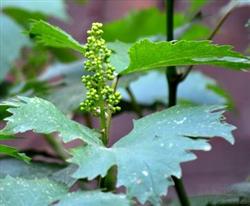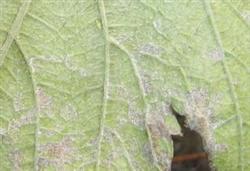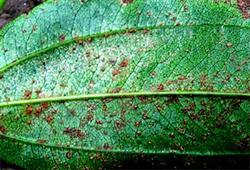Key points of Spring Grape Management

Spring is the season of sprouting and spreading leaves, elongating branches, heading, blooming and fruiting of grapes. How to strengthen the management of grape in spring and improve the yield and quality of grapes is a common concern of fruit farmers. The following focuses on the main management of grapes from February to April. The sprouting period from mid-late February to early March: irrigation of budding water and application of available nitrogen fertilizer. Orchards with conditions at this stage should be irrigated in time to ensure neat sprouting. At this time, when the flower buds continue to differentiate and the new shoots begin to grow vigorously, they need a lot of nutrients, so mature human feces and urine are mixed with 0.2% urea. The amount of fertilizer applied this time accounts for about 15% of the whole year. From March to late April: sprout wiping, shoot fixing, flower ear treatment and pest control. After winter pruning, 70% to 80% of the winter buds on the mother branch usually germinate, so attention should be paid to leaving buds at this time. Leave too many buds, easy to waste nutrients, the tree is weak, not conducive to fruit setting; but if there are too few buds, it is easy to promote the vigorous growth of branches and vines, which is easy to cause serious falling flowers and fruits, so we should pay attention to shoots and shoots. Wiping buds: usually when multiple buds sprout on a fruiting mother branch, leave one bud every 15-20 cm, leave 2-5 new shoots per fruiting mother branch, and erase the rest from the base. When wiping buds, generally erase the non-flowering spike buds or weak buds in the double buds, leaving only one tip in each bud eye. Of course, in order to ensure the yield, when the new shoot grows to 4-5 leaves, it can be decided whether the first roll of silk has a flower ear or not, but it is a waste of nutrients. Fixed shoot binding vine: the retained new shoot leaves 5 leaves above the flower ear before flowering, while the non-flowering shoot leaves 8 leaves to pick the heart. After coring, a large number of secondary shoots will germinate, leaving only 1-2 secondary shoots at the top and 2 leaves to pick the heart repeatedly, and the rest of the secondary shoots will be erased. At the same time, tie the vine at the right time according to the growth of the vine. Treatment of flower-fruit ear: in order to ensure the fruit-setting rate, the tip of flower ear 1-stroke-5 was usually removed by manual method, and 0.3% boron fertilizer and 0.5% urea were sprayed at flowering stage. Five days after flowering, the ears with more fruit were thinned artificially, and then bagged. Intertillage weeding and disease control: when grapes sprout 3-5 leaves, the disease should be prevented and sprayed every 7-10 days, especially after rain, and attention should be paid to intertillage weeding. This period is mainly to prevent grape black pox, gray mold, rust and so on. For example, black pox can be treated with 8000 times of DuPont Fuxing, and Botrytis cinerea can be prevented with 1500 times of Sukeling. Commonly used drugs can also be used here, such as carbendazim 800 times, mancozeb 800 times, mancozeb 800 times and so on.
- Prev

Disease control of grape in rainy season
Grape downy mildew is one of the important diseases of grape, which can occur in all parts of our country, mainly harming leaves, causing early defoliation, but also harming new shoots and ears. The main symptoms are polygonal macula on the front of the leaf, withered in the later stage, brown in color and white downy mildew on the back. Grape downy mildew.
- Next

How to identify and control jujube rust
(1) symptoms: jujube rust only harms leaves. At the initial stage, there are light green dots scattered on the back of the leaves, and then gradually protruding into a dark yellow, that is, a pile of germ summer spores. The shape of the summer spore pile is irregular and mostly occurs on both sides of the midrib, leaf tip and base. Yellow summer spores are scattered after the surface of the lesion is ruptured. At the front of the leaf corresponding to the pile of summer spores.
Related
- Moge, come on! The staff of the peasant association in the producing area of cantaloupe were frightened when the crowd gathered.
- Causes and Solutions of low Fruit setting rate of Apple
- Symptoms and control measures of passion fruit virus disease
- Fruit growing lesson: how do apple orchards keep high yields?
- Can you build orchards in the mountains? What are the pros and cons?
- How to manage the coloring period of Crisson grape?
- This paper introduces the processing technology of two kinds of fig products.
- How much is a month for retired teachers in rural areas by 2020?
- How can strawberry planting increase sugar content? We should pay attention to management in many aspects.
- What are the cultivation techniques on how to improve the yield of golden fruit?

